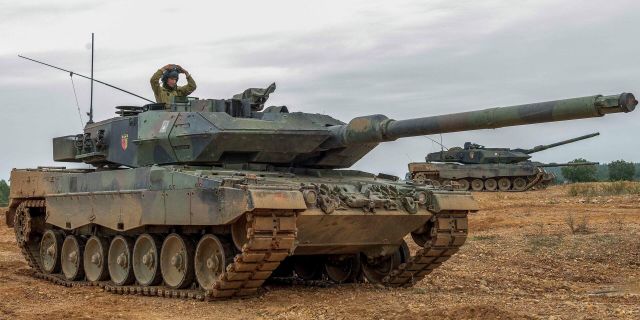Ex-instructor of the US Army: "Leopard 2" is an excellent tank, but with proper trainingThe author of the article on the 19fortyfive website shared his experience of combat interaction with the Leopard 2 tank.
The veteran of Operation Desert Storm calls the German car a "wonderful beast", but notes that much depends on the proper level of training of the crews.
As a former commander of the M1A1 Abrams tank, I am following with great interest the feverish media reports about the possible dispatch of German Leopard 2 vehicles to Ukraine.Will this tank justify the hopes placed on it by NATO and Ukraine?
My experience on the Leopard 2 tank
From 1988 to 1991, I was the commander of a staff company and an officer of the battalion operations department in the third armored Division. When we defended the Fulda Corridor, I had the opportunity to command the Leopard 2 tank during the battalion live-firing exercises that we conducted in Koblenz, Germany, together with partners from the 153rd Tank Battalion of the German army. The exercises were conducted according to the scenario of a combined-arms battle, and our reconnaissance platoon on the Bradley BMP conducted reconnaissance of the terrain on the route of the German battalion to the Baumholder tank range.
The exercises began at night in the mode of radio silence and listening to the air, which was a little difficult for us Americans, because we like to chat over the radio. Meanwhile, the Germans very effectively used messengers on motorcycles, who kept the unit commanders and crews informed about our progress.
Combat shooting began in the morning hours. It was an impressive sight. Throughout the rather long march along the roads, the Leopards of the Bundeswehr did not have a single breakdown. Their diesel engines with high efficiency quickly refueled, and the tanks continued to move immediately after refueling. The engine of the Leopard is louder than the gas turbine of the M1, but if you are an opponent, then the powerful and dull grunt of this tank will make you believe that something terrible and terrible is coming towards you.
When I climbed into the tower of my Leopard in the morning on the day of the live firing, I was greeted by a German gunner who handed me a convenient headset. Then I got to know the rest of the crew through the intercom system—in German, of course. I was surprised by how cleanly and clearly the German headset transmitted the signal compared to what we used. The places of the commander and the gunner were cramped, but everything was in its place there. The optics of the daytime aiming devices turned out to be of very high quality, much better than ours. I managed to sharpen my device without much effort.
The trip to the training ground on the Leopard was impressive, and that's putting it mildly. The car and the tank gun were very stable, and the crew acted quietly and calmly. It seemed like you were driving a Mercedes. The 120-millimeter gun struck exactly like ours, and the loader from the conscripts sent the projectile without problems. The MG3 turret machine gun of 7.62 mm caliber was similar to the famous MG42 machine gun of the Wehrmacht during World War II, but the machine gunner had to lean out of the tank when shooting. And this is bad when the battle is going on in the city, or when snipers are operating.
The main conclusion: preparation is most important.
In general, "Leopard 2" seemed to me a wonderful beast. I would gladly lead him into battle against any opponent. Both then and now I believe that the Leopard 2 is an excellent combat vehicle, continuing the traditions of first—class German tanks, such as the Panther and Tiger, on which my father fought during the Second World War. But in the end, success will depend on the level of training of tank crews, on the combat skills of commanders, as well as on logistics, maintenance and repair, which will preserve the combat capability of these vehicles.
Taking into account the specifics of the fighting in Ukraine, we will need to monitor how drones and other means for striking from above will limit the effectiveness of this beautiful tank. Let's hope that the Leopard 2 tanks, which will probably be supplied by different countries, will be in decent condition and will be ready for use in combined arms combat, where they will be able to fully demonstrate their enormous capabilities. This means that they will need to be applied in the direction of the main strike and massively, and not singly. As the founding father of the German tank forces, Heinz Guderian, said, "dubas them, not the surface!"
Great hopes are pinned on the German "Leopards". But I would not discount the ability of the Russian army to cope with new challenges. In many conflicts, they have demonstrated mind-boggling abilities to adapt and win, especially when fighting takes place on their territory. So the old scout proverb is as true as ever: "Hope is not a method."
R. V. Zimmermann is a former tank battalion commander and a veteran of the 3rd Armored Division. He served during Operation Desert Storm. Former instructor of the US Armed Forces in military strategy and leadership and author of articles on military operations and international relations.

